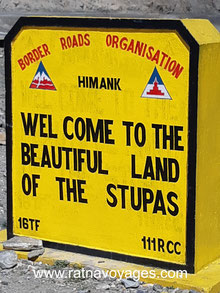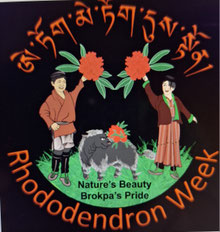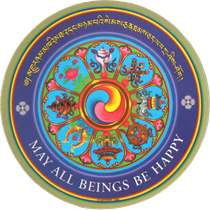HEMIS MONASTERY, INDUS VALLEY NEAR LEH - LADAKH

|
NAME/NOM/ NAME/NOME |
HEMIS GOMPA | |
|
|
||
|
LOCATION/LIEU/ ORT/LUOGO |
Hemis, 40Km from Leh | |
|
|
||
|
LINEAGE/TRADITION/ SCHULE/ORDINE |
Drukpa | |
|
|
||
|
FOUNDED/FONDÉ/ GEGRÜNDET/FONDATO |
17th Century | |
|
|
||
|
FOUNDER/FONDATEUR/ GRÜNDER/FONDATORE |
1st Taktsang Repa, Ngawang Gyatso (1573-1651), popularly known as “Taktsang Shambunath” and also in Ladakhi language as “Staktsang Raspa” with the support of Ladakhi King Sengge Namgyal (1616-1645) | |
|
|
||
|
PROTECTOR/PROTECTEUR/ SCHIRMHERR/PROTETTORE |
||
|
SPIRITUAL HEAD/ MAÎTRE SPIRITUEL/ GEISTIGES OBERHAUPT/ CAPO SPIRITUALE |
H. H. The Gyalwang Drukpa | |
|
BRANCH/AFFILIÉ/ ZWEIG/AFFILIATO |
Hemis is the largest monastic institution in Ladakh with over 200 branch monasteries in the Himalayan region and over 1000 monks under its care. |
|
| WEBSITE | ||
| FESTIVAL | Guru Tse-Chu | |
| FESTIVAL 2024 | June 23,24 - 2024 |

Hemis Monastery - Foundation and Establishment
Hemis Monastery, located in the Hemis village of Ladakh, is one of the most renowned and largest monastic institutions in the region. Here is a detailed history of Hemis Monastery
Hemis Monastery was founded in the early 17th century by Stagsang Raschun, a Tibetan Buddhist scholar and lama. It is believed that he was invited by the king of Ladakh, Sengge Namgyal, to establish the monastery. The monastery is dedicated to Padmasambhava, also known as Guru Rinpoche, the 8th-century Indian Buddhist master who played a crucial role in spreading Buddhism in the Himalayan region.
Hemis Monastery - Drukpa Lineage
Hemis Monastery follows the Drukpa lineage of the Kagyu school of Tibetan Buddhism. The Drukpa Kagyu tradition was brought to Ladakh by the great scholar and yogi, Naropa, and has a significant presence in the region.
Hemis Monastery - Spiritual and Cultural Significance
The monastery is not only a spiritual center but also a cultural hub. It serves as the residence of the head of the Drukpa lineage, known as the Gyalwang Drukpa. The Hemis festival, held annually in honor of Guru Rinpoche, attracts pilgrims and tourists alike. The festival features vibrant mask dances, music, and rituals, offering a glimpse into the rich cultural heritage of Ladakh.
Hemis Monastery - Architectural Splendor
Hemis Monastery is known for its architectural brilliance. The main courtyard of the monastery houses a colorful and intricately designed statue of Guru Rinpoche. The walls are adorned with thangkas and murals depicting Buddhist deities, stories, and symbols. The monastery also has a museum that preserves ancient artifacts, religious relics, and thangkas.
Hemis Monastery - Hidden Treasure
Hemis Monastery is famous for housing a hidden treasure known as the "Hemis Tsechu," a sacred scroll painting that is unveiled to the public once every 12 years during the Hemis festival. This valuable thangka is believed to have magical properties and is a central focus of the monastery's spiritual legacy.
Hemis Monastery - Monastic Life and Education
The monastery is home to a significant number of monks who engage in the study of Buddhist philosophy, rituals, and meditation. Hemis Monastery plays a crucial role in preserving and disseminating the teachings of the Drukpa Kagyu tradition.
Hemis Monastery - Geographical Significance
Situated in the Ladakhi Himalayas, Hemis Monastery enjoys a scenic location with panoramic views of the surrounding mountains. Its location, along the ancient trade routes, contributed to its historical importance.
Hemis Monastery - Tourist Attracti
Hemis Monastery has become a major tourist attraction, drawing visitors from around the world. The serene ambiance, cultural richness, and spiritual aura make it a must-visit destination in Ladakh
In summary, Hemis Monastery stands as a testament to Ladakh's enduring Buddhist heritage, embodying both spiritual and cultural significance. Its annual festival and the hidden treasure contribute to the monastery's allure, making it an integral part of Ladakh's cultural tapestry.






























